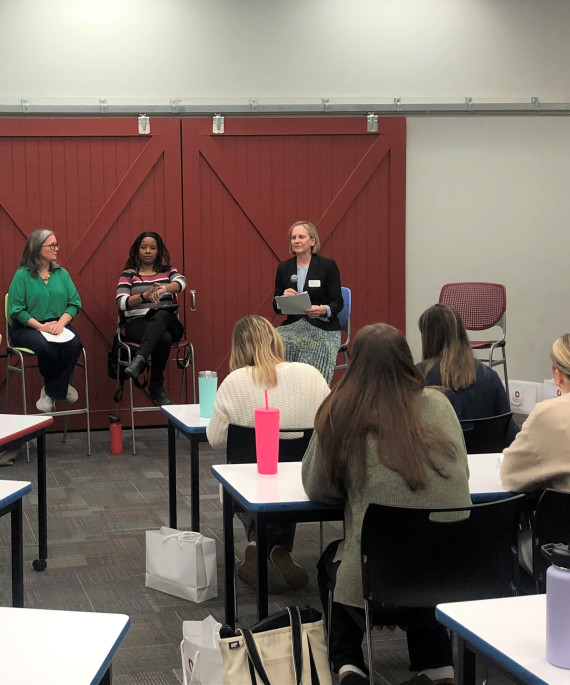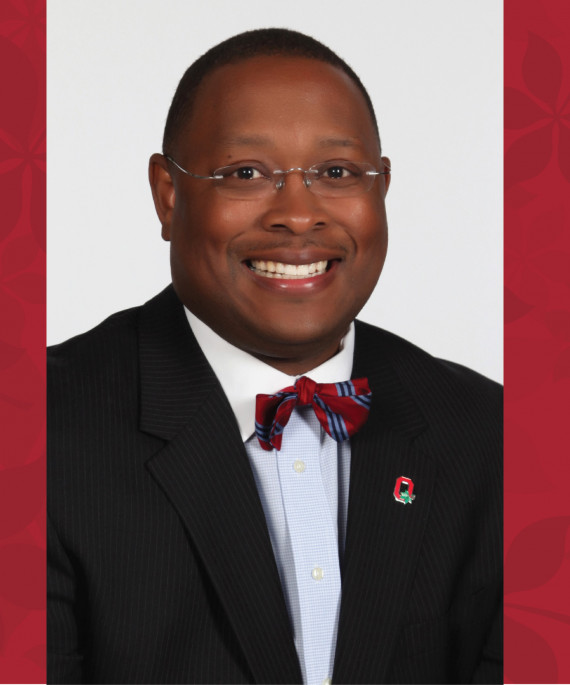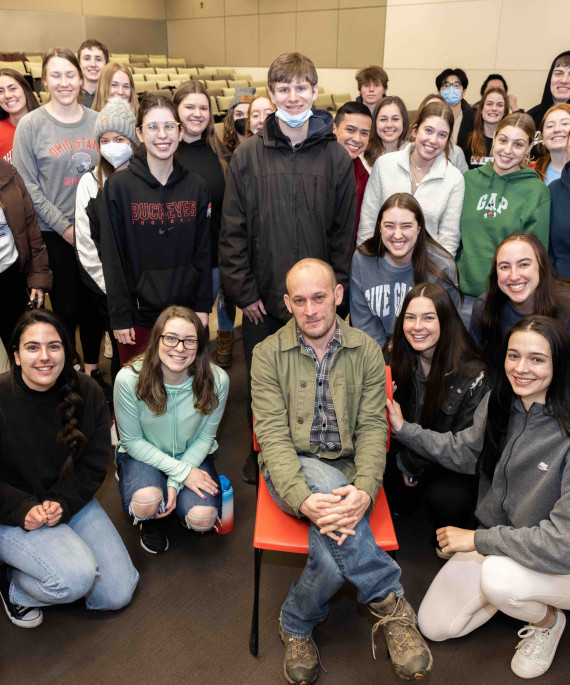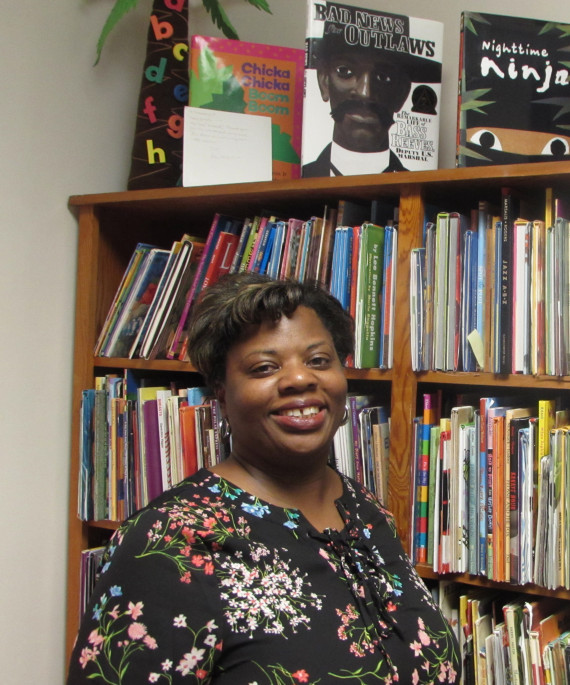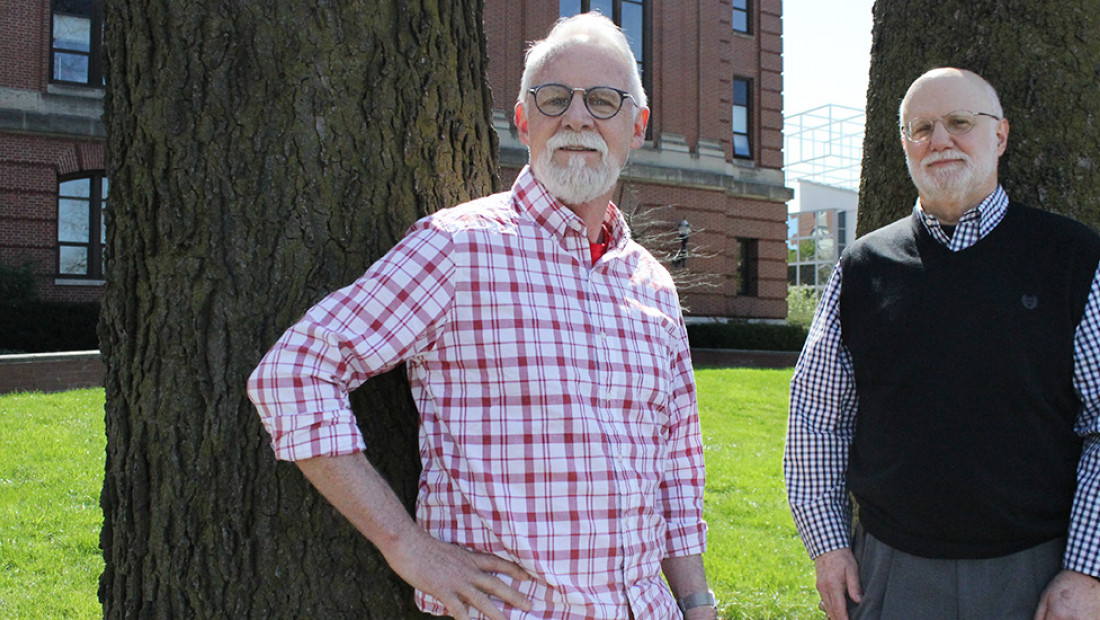
Christian Faltis and George Newell received Lifetime Achievement awards from their special interest groups in the American Educational Research Association.
Friends since grad school, AERA award winners offer advice on achievement
Back when they were cohorts toiling over doctoral research in a cave-like Stanford University basement, Christian Faltis and George Newell had no inkling they’d end up at The Ohio State University together.
Their careers took them to other universities — Faltis in the southwest and Newell in the east. Thirty-five years later, they have both earned lifetime achievement awards from their special interest groups of the American Educational Research Association. No longer in a cave, their offices are a flight of stairs from one another in Arps Hall.
Faltis, chair of the college’s Department of Teaching and Learning since 2016, won the Lifetime Achievement Award from the Bilingual Education Research Special Interest Group in April; Newell, professor of adolescent, postsecondary and community literacies since 1989 and principal investigator of the Argumentative Writing Project, won the Steven Witte Lifetime Achievement Award. The two talked recently about revolutionary education research born out of the ’80s, rebooting your career mid-life and what it takes to win a lifetime achievement award.
EHE: Congratulations on your awards. You two go way back.
Faltis: We’re both from the same class, 1983, at Stanford. We’ve been friends a long time.
Newell: That was a pretty heady time for me because of the level of conversation about education in schools. I remember being in a first-year course with Elliot Eisner. There were people in that class who had written books or were professors overseas. And there I was, a ninth-grade English arts teacher from a high school in the south hills of Pittsburgh.
Faltis: That was an amazing group of people. Gloria Ladson-Billings was right behind us, one of the most famous education researchers ever. John Willett and Jerri Willett. John’s a full professor at Harvard; Jerri’s a full professor at U Mass Amherst. They were all there. Geez. And every one of our professors was a world-class scholar.
Newell: That was my foundation. It became my standard to live and work that way. Research about writing was just really beginning to take off. So, the work I was doing was part of a very young field then, especially developing theoretical and empirical basis for teaching and learning writing.
Faltis: And I did my first research there on teaching writing in Spanish for biligual speakers.
“No one in the country has focused as deeply (as Chris Faltis) on the importance of preparing teachers for working with a population of students that has been historically underserved particularly at the secondary level.”
EHE: Is that the secret to getting a lifetime achievement award? Surround yourself with great minds?
Faltis: It is. At Arizona State, we had the top program in the nation in bilingual ed. We had the best scholars. It was a critical mass of really great scholars: Beatriz Arias, Tom Barone, Carole Edelsky to name a few.
Newell: I’ve long been interested in working with people who knew a bit more than me. In some cases, quite a bit more than me. At Stanford, it was always okay for me to push myself by working with people who were really, really very smart and hard working.
Faltis: As a kid who grew up and went to school in Mexico, everything about Mexican-American studies and Spanish-English bilingualism resonated with me. I was lucky to get into a group of researchers (at Arizona State), mostly Chicano men. I was mentored by Henry Trueba, who became editor of Educational Researcher, and invited me on his research team in 1994. I co-edited my first book with Rudalfo Jacobson. Others mentored me into the field of bilingualism and bilingual education. Then I did the same and passed it forward to my students and younger colleagues.
Newell: For me, it has become important to not be afraid to work with people who have very different ideas and ways of thinking about and doing research. In 2001, (EHE) started national searches to bring in people who were already well established in the field. And with that came David Bloome, who brought a very different view of English language arts and writing than I had. He’s very interested in the social, in talk and in an ethnographic perspective. I come from more of a cognitive composition and rhetoric orientation. We’ve brought together these vastly different perspectives. That kind of imaginative complexity around research and theory has brought us success.
EHE: That was sort of a renewal for you.
Newell: Ten, 15 years ago, I was really at a crossroads. I probably put more time into things like service and teaching. But eventually I realized that I had to kind of break out and have my own vision of what I wanted to do and how it might benefit our doctoral students. I was thinking, what the heck. I might as well do what I think is a good contribution to both research and teaching through my scholarship.
EHE: Most of the research you both have done is inside the classroom.
Faltis: Early on, I was looking at how mainstream monolingual English speakers who are teachers — the majority white — can begin to understand the language and learning needs of children who are becoming bilingual in school. In most classrooms that I visited, the Mexican kids sat in the back. They were left out or they were pulled out for English learning classes. These children and youth were just not given an equitable education.
Newell: When David Bloome arrived at Ohio State, he was as interested in schools, teachers and research in classrooms as I had been. A large segment of research in composition has moved to out-of-school contexts, to look at community literacy or multimodal composition in after-school programs. School writing research has thinned, in my view, due to the challenges of accessing teachers and students. Our research team began to fill a vacuum, studying teaching and learning of argumentative writing in high school classrooms. I think that caught the Lifetime Achievement Award committee’s attention.
(George Newell's) long-term work on English curriculum and its impact on students’ argumentative writing knowledge and strategies is a model of research that matters.
Newell: One thing that Chris and I share is the idea of teacher change, teacher learning. I’m beginning to realize that we’ve had decade after decade of theoretical and empirical work on children and student learning, with very little attention on teacher learning. Institutional settings shape the learning more than people might imagine: The testing regimens, time constraints, the isolation the teachers experience. That institutional context is a very important factor in how teachers change and learn over time.
Faltis: Another area where we have very, very little research is teacher education programs and what our (preservice) teachers learn in those two years. We don’t know how teacher educators are preparing the students who are going to be teachers of bilingual education. Very few people have given attention to this area of teacher education.
EHE: That’s the next study, perhaps? How important is it to be in front of the curve?
Faltis: For me it will always be. You’ve got to know your field and stay ahead. I’ve been lucky all my career by always sort of leading the field rather than talking about things that are already out there. That’s harder to do now because more people are publishing, and new ideas surface more quickly.
EHE: Any other secrets to your success?
Newell: The other thing I have found to be really important … how to say this without sounding too naive … is just to be supportive and nice to people. I know a lot of people who would probably have had different careers if they had just been a little bit more sociable.
Faltis: George is really nice; he cares about people and ensuring strong learning environments.
Newell: Creating a community that feels good about itself and wants to continue to do stuff together is really important. That has to be balanced with aggressiveness and a certain level of individualism. There’s a real balance between thinking collectively with the community of people and how you’re pushing yourself and driving yourself individually.

